What to know about hamantaschen, a delicious Purim treat that dishonors a villain
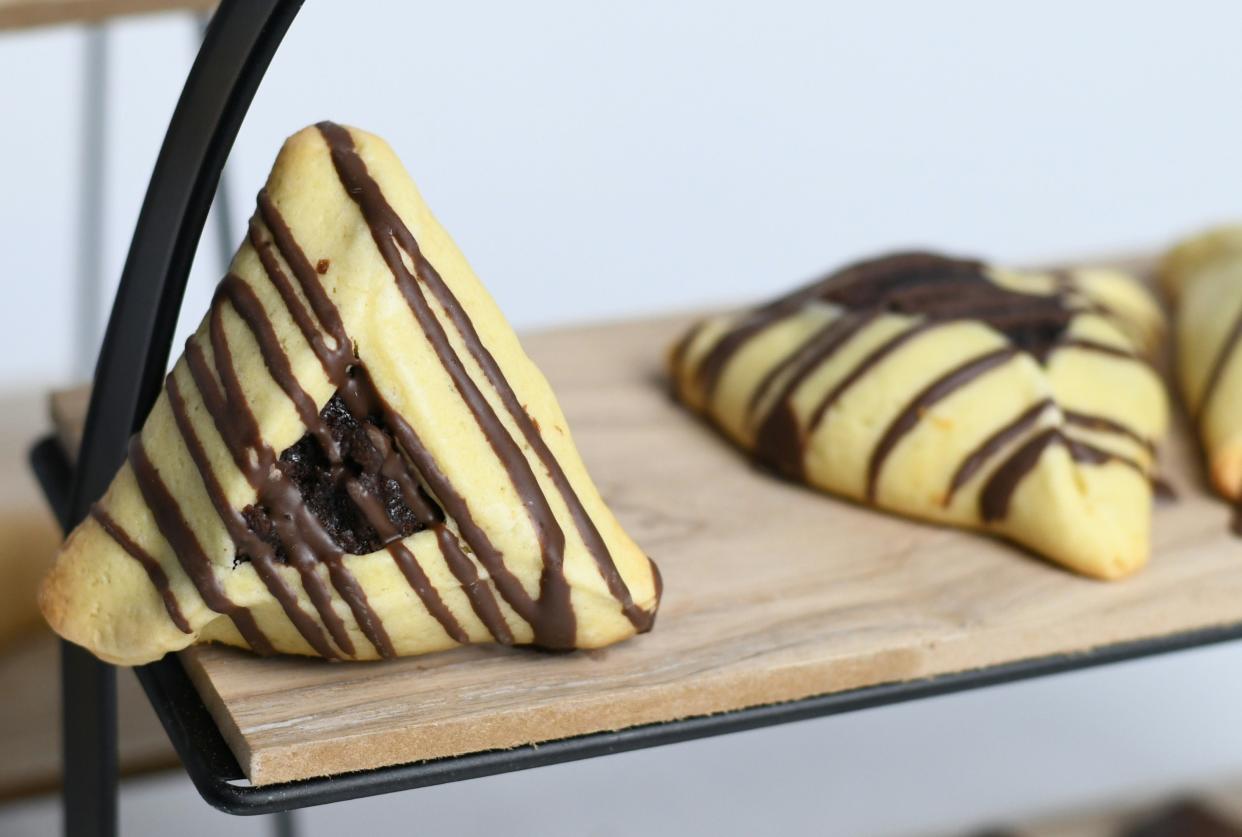
- Oops!Something went wrong.Please try again later.
You might not have heard of hamantaschen (pronounced hah-mentash-in) or Purim, the Jewish holiday these shaped filled cookies represent, but this tasty treat might just become your favorite late-winter snack.
In the week leading up to Purim, (which begins at sundown March 6 and ends a day later) bakeries and home chefs pull out the rolling pins and fire up the ovens. But hamantaschen’s time to shine is fleeting, so get them while you can.
More:Where to buy hamantaschen pastries around Purim in Milwaukee
Haman’s hatred led to his demise
The triangular cut of this seasonal pastry stems from the legendary shape of the villain's hat in the 5th century b.c.e., as told in the biblical Book of Esther.
“Jews traditionally use food as a way to tell the story of an experience,” said Moishe Steigmann, founder and director of the Milwaukee-based nonprofit Own Your Judaism.
The Purim story features regular guy Mordecai who raised his cousin, Queen Esther, after her parents died. Under Persian rule, Esther hid the fact that she was Jewish. Haman was King Ahasuerus’ head honcho.
“Haman devised a plan to kill all the Jews because Mordecai refused to bow down to Haman. With Mordecai’s inspiration, Esther devised her own brilliant plan to expose Haman’s hatred,” Steigmann explained.
Esther told the king about Haman’s evil plot and revealed her Judaism. Dramatic plot twist: The king immediately demanded Haman’s execution.
“This ultimately gave space to the Jews to fight for their survival,” Steigmann said.
The treats themselves didn't come about until thousands of years later, in Germany. Originally poppy seed was the main filling.
What better way for Jewish people to remember the Purim story than by eating cookies named after the bad guy and shaped like his hat?
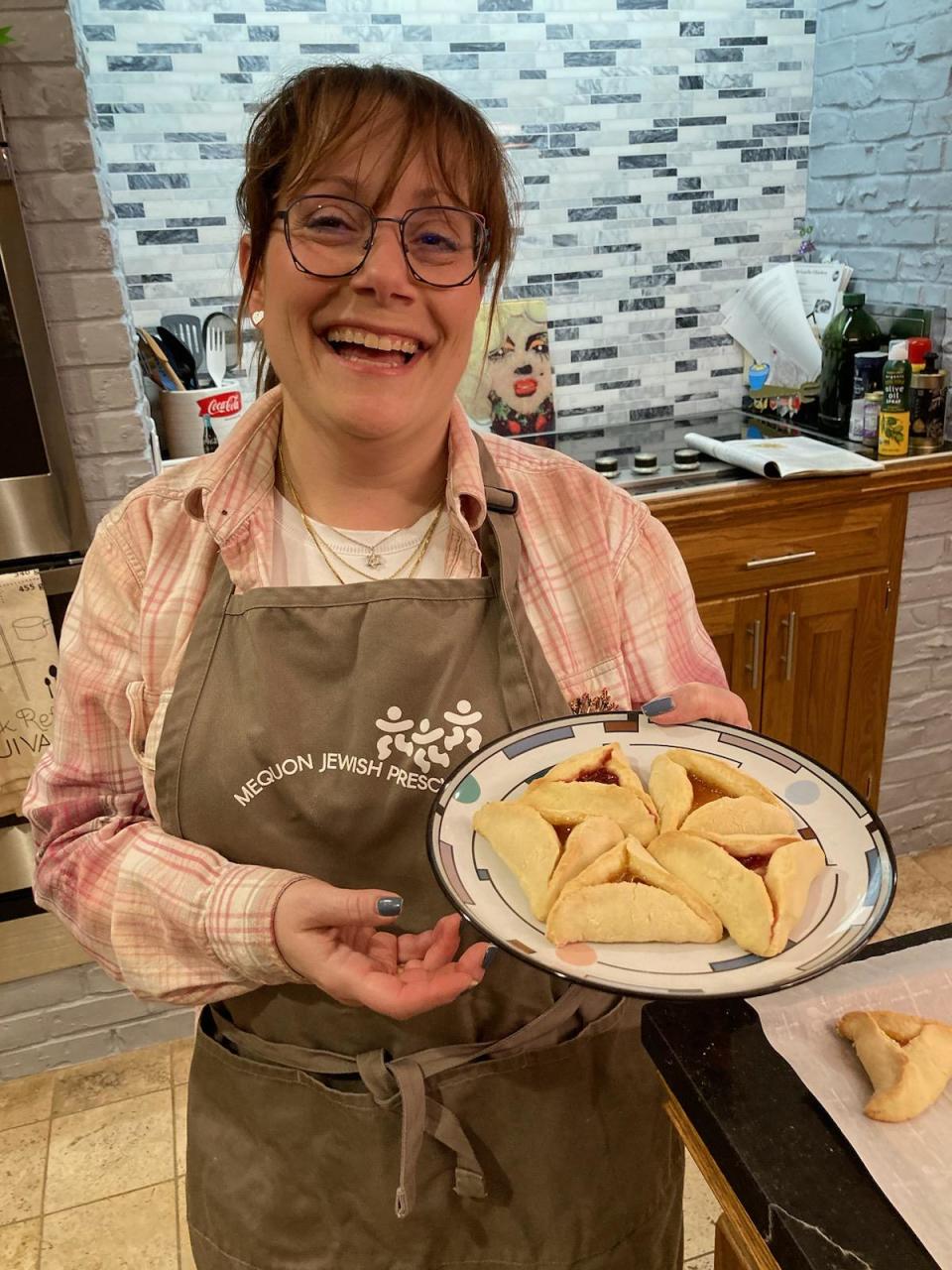
Carnivals, costumes and community go with hamantaschen
Purim is not Jewish Halloween, but it’s a fair comparison since celebrations include wearing costumes, gathering at carnivals and delivering snacks and sweets to friends and neighbors. Sharing hamantaschen is one interpretation of the Purim mitzvah (good deed).
“Many of our kitchens turn into hamantaschen factories,” said Rachael Marks, an amateur baker from Mequon.
Marks loves to prep, bake, pack and ship hundreds of hamantaschen to relatives in other cities. But her system isn’t exactly a model of efficiency.
“I make them and I send them. I make them again and I send them again. Then I make them again. Part of my problem is that hamantaschen are my husband's favorite cookie, so they just keep disappearing,” she admitted.
Hamantaschen baking is a fun, family project.
“It's not a hard cookie to make. It's just such potchke (the Yiddish word for fuss). It’s a ton of work, but I love doing it,” Marks said.
Her sister-in-law in Green Bay, college-age daughters in Minneapolis and Madison and nephew in Seattle appreciate Marks’ efforts.
“I love when I get a nice text afterwards that says, ‘wow, thank you so much. You really made my day,'” Marks said.
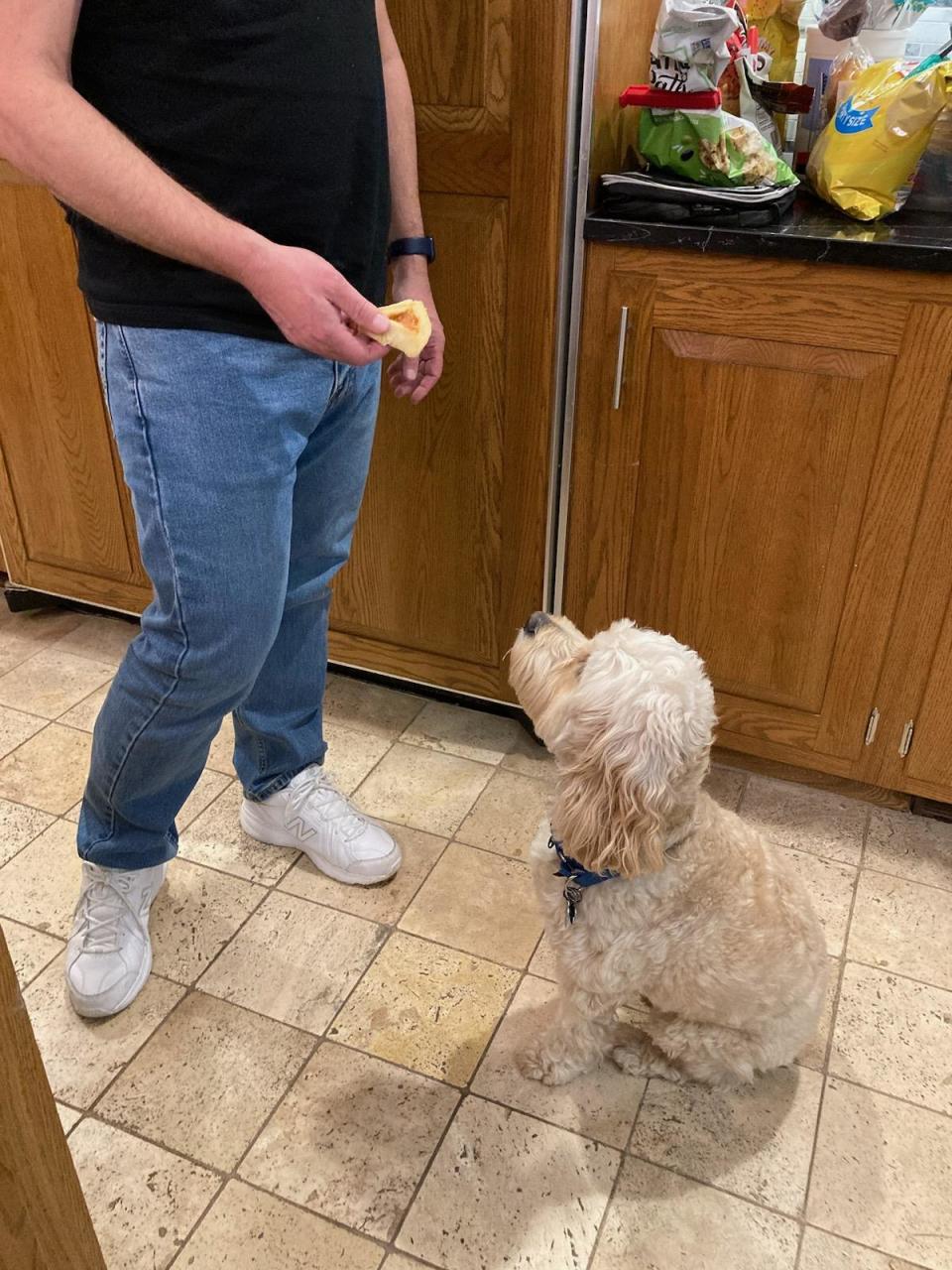
Recipes go from generation to generation
Hamantaschen bakers all have their own recipes, frequently handed down through families. At Mila’s Bakery in Thiensville, second-generation owner Anna Bakalinsky fondly remembers watching her mother at work.
“I would stand there as a little girl, watching her. Each hamantaschen was the perfect circle with the perfect corner pinches to hold in the yummy filling,” Bakalinsky recalled. “The recipe is still made with just as much love. The onlytweaking is the filling. … we used to offer poppy seed (filling) many years ago, but with time, other flavors became more popular.”
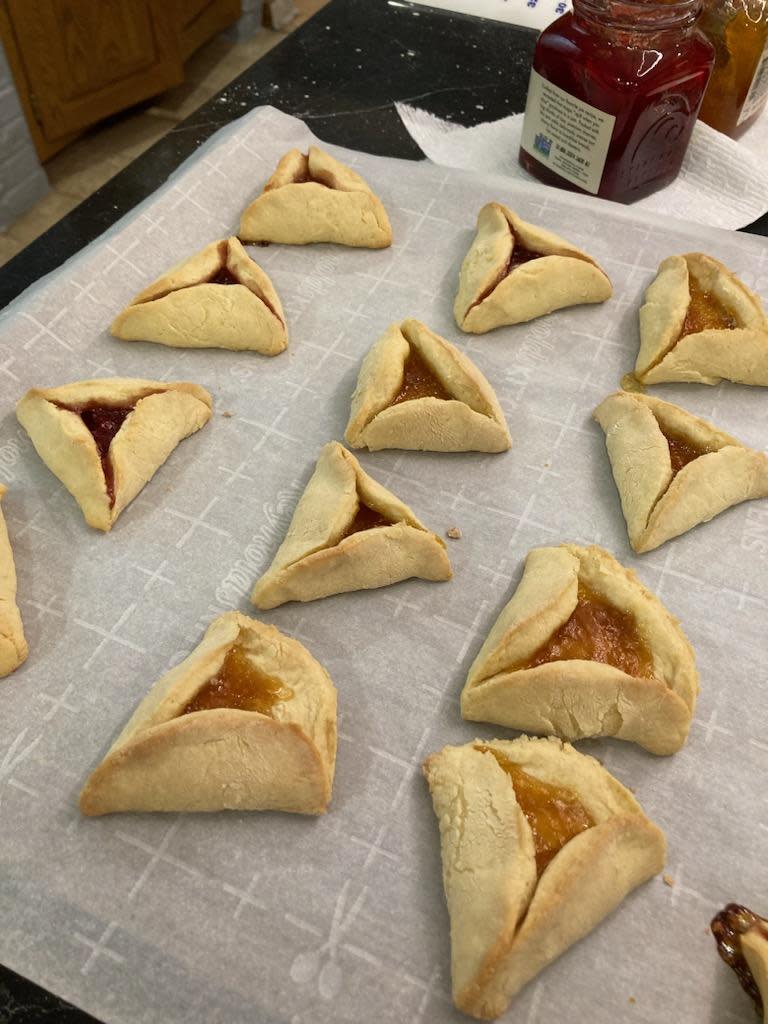
Brownie-filled hamantaschen are a hit
Turning a baking hobby into a side hustle is a popular practice. But Sara Perlman has been baking and selling kosher products out of her west side home for the past 15 years. This mom of eight children, ranging from age 19 to almost 2, supplies cakes, cookies, challahs and more to friends and neighbors.
“I started baking as a stress reliever, and now I sell it on the side. It's fun,” Perlman said.
For Purim, Perlman offers traditional hamantaschen flavors, except for one.
“The oldest traditional flavor is poppy seed. I don't make it; I can't stand it. Just yuck. I’m sorry,” Perlman said.
“I do the other traditional flavors like strawberry, raspberry, blueberry, a custard one and a chocolate custard one ... really anybody who knows how to bake could make those,” Perlman explained.
When she wanted to elevate her hamantaschen flavors, she turned to another favorite item: brownies.
“My most favorite flavor now is a little different, it's a brownie filling. The outside cookie part is a little bit crunchier (than traditional hamantaschen dough) and then it gets drizzled with chocolate on the top,” she said.
Through word of mouth and an old-school approach, Perlman’s business, Cookie Kisses, is booming. “I don't have a website and I'm not on social media. I carry a flip phone,” she explained. “I'm kind of an old-fashioned gal,”
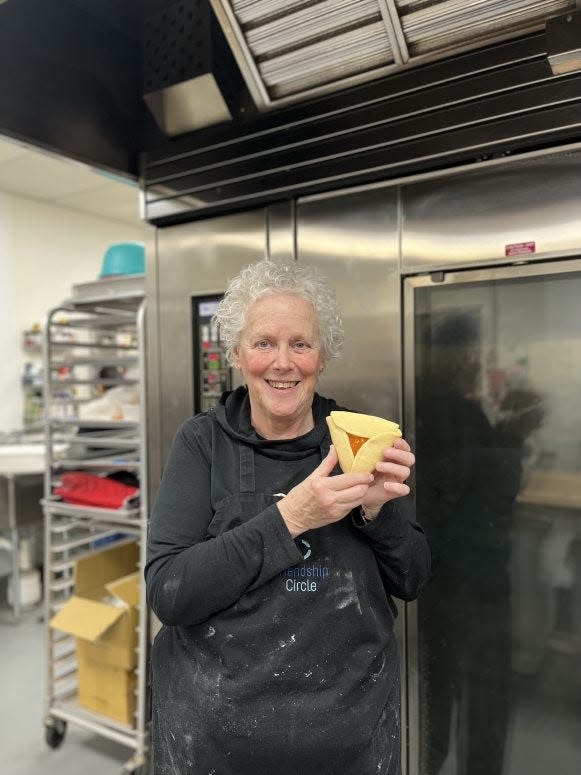
Fun Purim facts
The expression "the whole megillah" stems from Purim. Congregants wear costumes and gather at synagogue to read the entire Book of Esther, aka the megillah. Reading the megillah takes hours and when Haman's name is read, which happens a lot, the congregation shakes noise makers and boos loudly. Tylenol or Advil is recommended before any megillah reading.
In the 2006 feature comedy, "For Your Consideration" starring Eugene Levy and co-written by Levy and Christopher Guest, the movie within the movie is "Home for Purim." In the story, studio execs eventually change the fictitious film's title to "Home for Thanksgiving."
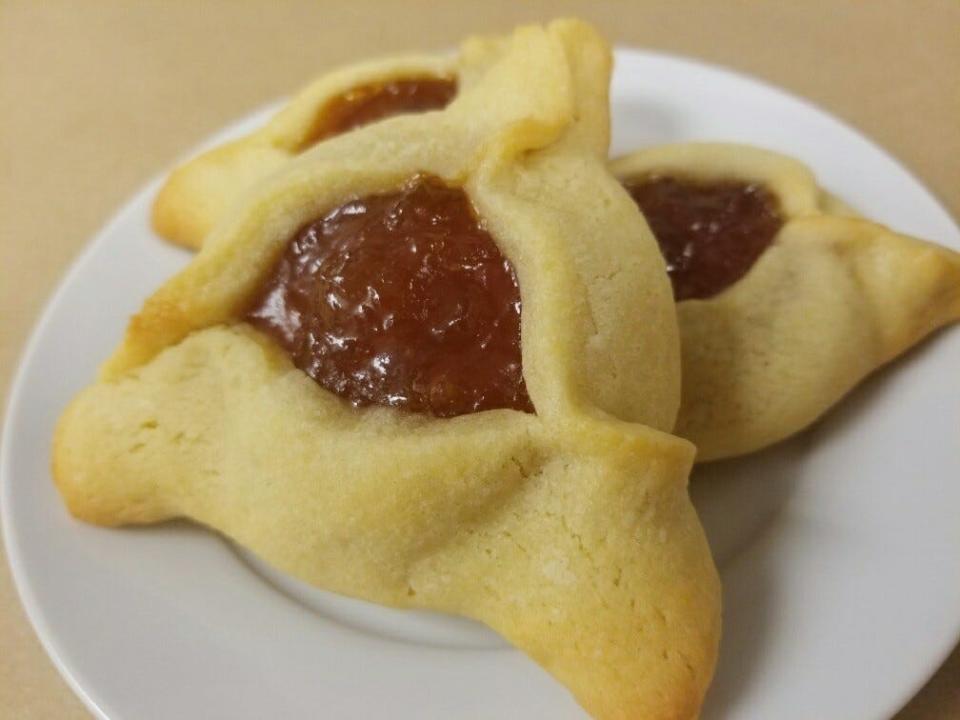
Sign up for our Dish newsletter to get food and dining news delivered to your inbox.
This article originally appeared on Milwaukee Journal Sentinel: Hamantaschen: Jewish Purim cookies honor Esther, escape from a villain

